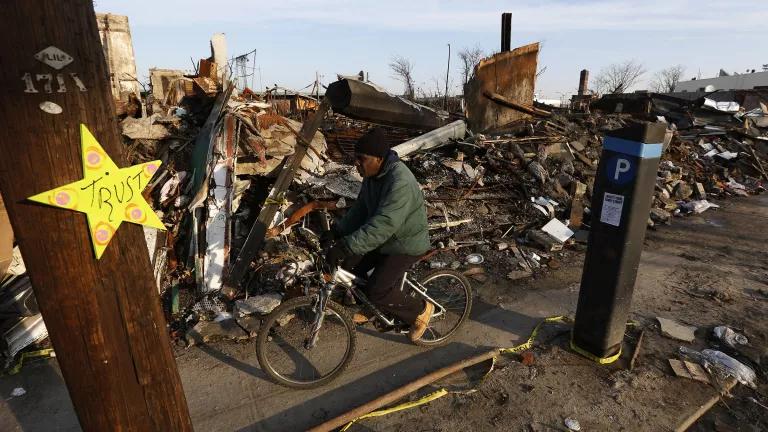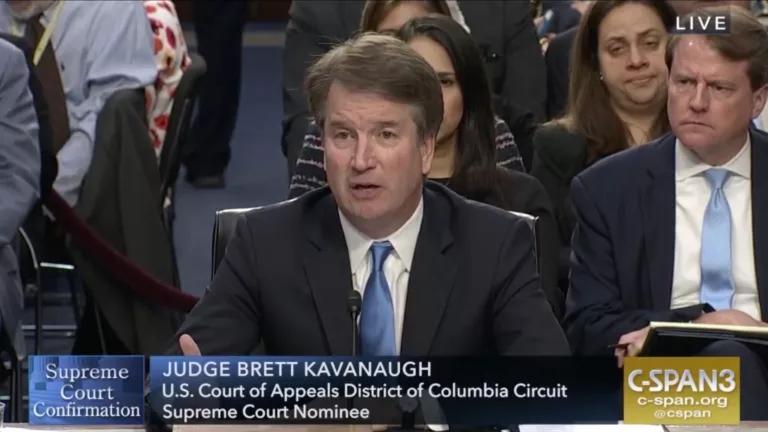Of Course, It’s OK, We Are Only Lying About NEPA

There are few principles as basic to Americans as the right to participate in decisions when the federal government is going to affect the environment or economy of a community. Because this is inconvenient for developers they have enlisted the Congress and the White House in trying to cripple that right that is enshrined in the National Environmental Policy Act (NEPA). There have been over 60 separate bills introduced this year to scale it back NEPA and on June 6, 2018, another hearing on weakening NEPA is scheduled. This hearing is based on the theory that oil and gas drilling and fracking on public lands would never have a more than insignificant impact on the environment, ever.

Over the past several months, the propaganda about the required environmental reviews that agencies conduct before projects has been overwhelming. I wrote a blog on one of those misrepresentations here. The major theme of the critics of environmental reviews is that despite its almost 50-year history, government projects, private fossil fuel development, and infrastructure has been stymied, mainly because of the National Environmental Policy Act. This is obviously untrue, based on the growth of our economy that included becoming a net exporter of energy during President Obama’s term. I will use this blog to critique several recent poster children of NEPA and note the misstatements. (Or, if you prefer, “lies.”)
Poster Child #1 Bayonne Bridge
CNBC did a story about the delays President Trump cited for road and highway projects, and, at the behest of the White House, spotlighted the case of the Bayonne Bridge raising, which critics said was slowed because of permitting and environmental reviews. The CNBC investigative tory, if you watch the short clip here, found that weather and continuing the use of the bridge during construction were the drivers of the delays. The claims of a “10-year” review, were off base: It only took 26 months.
Post Child #2 Anderson Bridge
On February 13, in conjunction with its federal infrastructure plan rollout, the White House published a blog post titled “Washington Will No Longer be a Roadblock to Rebuilding America.” The blog uses the long delay of the Anderson Memorial Bridge project in Boston as an example of how federal environmental reviews and federal permitting is hindering infrastructure development across the country. The problem, once again, is that federal environmental permitting had nothing to do with this project. The Anderson Memorial Bridge project was funded completely by the State of Massachusetts and did not alter the existing waterway along the Charles River, so at no point was federal-level environmental permitting needed for this project. The implication is clear: While the White House has come up with a mythical conclusion, it failed to find an example of even one project that fit that conclusion.
Poster Child #3: Dredging the Port of Corpus Christi
This is a typical scapegoating NEPA story. Politicians often get authorization for projects (and local press about the project) but fail to get the Congress to “appropriate” money to build them. Authorizations mean nothing without appropriations. Often, rather than admit they were unable to get real money, members will put the blame on environmental reviews. On March 6, 2018, according to the Corpus Christi Business News, officials representing the Port of Corpus Christi met with their former governor and now Secretary of Energy Rick Perry about the need for federal funding for the dredging of the Port of Corpus Christi. The environmental reviews for this project weren’t mentioned.
However, the following week, Perry testified before the Senate Commerce Committee about the president’s infrastructure package loaded with anti-NEPA provisions. He didn’t urge lawmakers to fund the dredging project, as the port officials had requested. Instead, he claimed the reason the project failed to go forward wasn’t money, but bureaucrats:
“This isn’t a matter of we’re coming up here, or they’re coming up here, and asking for more money, they’re asking for federal agencies to basically get out of the way, to give them approval, so I think that’s one of the things that the president is talking about.”
This will be sad news to the Port which said the problem wasn’t NEPA, but the need for 225 million federal dollars.
Stories like this can be repeated a million times, or rather 97 billion times. A Republican memo to the Transportation and Infrastructure committee about funding of Army Corps of Engineers projects, noted that there are $97 billion of projects ready to go, but the Corps’ construction budget is only $5 billion a year. The problem isn’t NEPA; it’s where is the $92 billion.

NRDC is working to protect NEPA, one of the landmark environmental statutes. The main goal of NEPA is assuring that the federal government looks before it leaps. It requires the federal government, when it is doing something to your community, to allow the public and local officials a chance to comment and these comments often lead to better projects. It should not be gutted as a diversion from the real problem addressing our infrastructure.
I recently was on a podcast with a Nick Goldstein, Vice President of Regulatory & Legal Issues of the American Road & Transportation Builders Association. I was well armed to defend NEPA from attacks by the road builders, but instead found myself nodding along while Goldstein made the same point I did: The real problem with infrastructure is the lack of federal financing.



